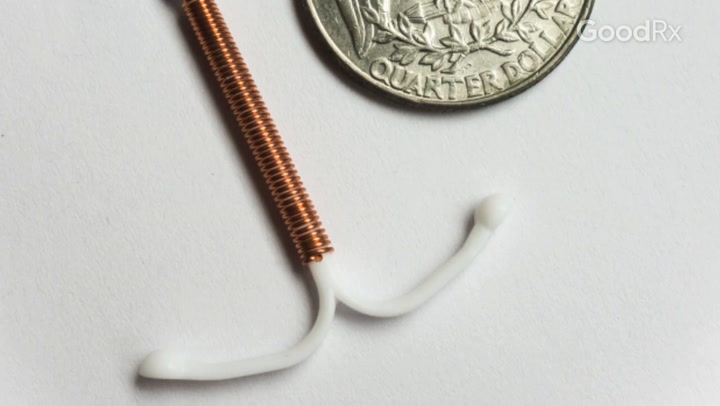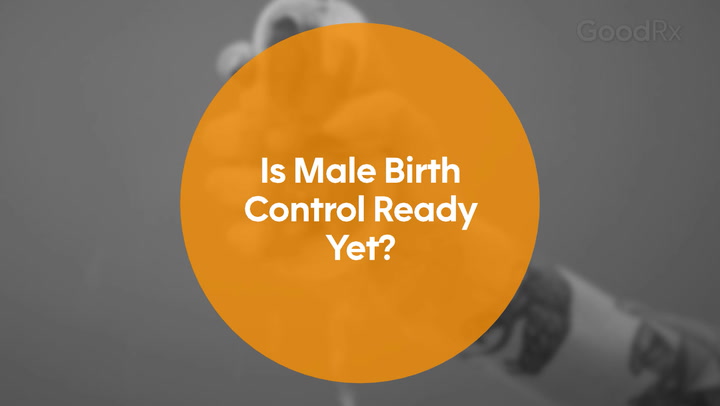
Skyla vs. Mirena IUD: Side Effects, Pros, and Cons Compared
Key takeaways:
Hormonal intrauterine devices (IUDs) are over 99% effective at preventing pregnancy. They each contain different amounts of the hormone levonorgestrel.
Both Mirena and Skyla provide years of birth control and can lighten or eliminate your period. But only Mirena is FDA-approved to treat heavy menstrual bleeding.
IUDs are not for everyone. Some side effects can be severe, so you should talk to your healthcare provider before making your decision.

Four strengths of hormonal intrauterine devices (IUDs) are available as highly effective options for birth control. These IUDs release a small amount of levonorgestrel, a lab-made form of progesterone. This helps prevent pregnancy and can also control heavy menstrual bleeding.
Two of the available hormonal IUDs are the Skyla IUD and Mirena IUD. Many women like these IUDs because their periods lighten, or stop altogether. And they don’t have to worry about a birth control method for years. But what’s the difference between them?
What is the Skyla IUD?
Skyla is an IUD that’s inserted into your uterus by a healthcare provider at their office. The Skyla IUD releases a low dose of levonorgestrel (14 mcg per day) to prevent pregnancy and can remain in place for up to 3 years.
Search and compare options
Skyla is over 99% effective at preventing pregnancy. Skyla works as a birth control method in a few ways:
It thickens cervical mucus, making it harder for sperm to reach an egg.
It creates a toxic environment for sperm, lowering the number of sperm that reach an egg.
It thins the lining of the uterus, making it harder for a fertilized egg to implant and start a pregnancy.
Side effects of Skyla
With the Skyla IUD, side effects can occur. Changes to your periods or spotting are common. This usually resolves within the first 6 months after insertion.
Other common Skyla IUD side effects include:
Pain or bleeding after placement
Menstrual cramps
Lower stomach pain
Headaches
Acne
Breast pain
Pain around the vagina and vulva
More rare but serious side effects include:
Expulsion (when your body pushes the IUD back out)
A higher risk of ectopic pregnancy
Tear of the uterine wall
It’s important to know what warning signs to watch for, to help catch and manage these serious side effects early. Contact your healthcare provider if you’re experiencing any of the following:
Fever or chills
Severe abdominal or pelvic pain
New or worse pain during sex
Unusual vaginal discharge
Heavy vaginal bleeding
Believe you may be pregnant
Every IUD will have one or two small threads attached to the bottom of it. These threads will hang out of your cervix and into your vagina. You should check for them about once a month to make sure your IUD is still in place. If you cannot feel the threads or they’ve changed in length, give your healthcare provider a call.
Pros and cons of the Skyla IUD
| Pros of Skyla | Cons of Skyla |
|---|---|
|
|
What is Mirena?
Mirena is another hormonal IUD that releases levonorgestrel after it’s inserted into the uterus. Mirena releases a higher dose of hormones (20 mcg per day) than the Skyla IUD. This allows Mirena to be used for birth control for up to 7 years. It works the same way as Skyla and is over 99% effective for preventing pregnancy as well. But, unlike Skyla, Mirena is also FDA-approved to treat heavy periods for up to 5 years.
In recent years, researchers have investigated whether Mirena can be used as an emergency contraceptive (EC) after unprotected sex. Current clinical studies show that it may be an effective choice. But, the use of Mirena as an EC is considered off-label, which means it has not been FDA-approved to be used in this way.
Mirena side effects
Because the Mirena IUD releases the same hormone as Skyla, the possible side effects are similar for both IUDs. But, it’s more common for women who use Mirena to stop getting their period after the first year of use. For many women, especially those who experience heavy or painful periods, this may be a welcome side effect.
Mirena also has the same serious side effects, like PID. But like Skyla, these risks are very rare. Mirena will also have small threads that hang out of the cervix. Be sure to check for these threads once a month to make sure the IUD hasn’t moved out of place.
Pros and cons of the Mirena IUD
| Pros of Mirena | Cons of Mirena |
|---|---|
|
|
Mirena vs. Skyla: Which one is better for you?
While choosing a birth control method is a personal decision, it can be helpful to see the basics of the available choices to help you compare options. Below are some key differences between Mirena and Skyla.
| Skyla IUD | Mirena IUD | |
|---|---|---|
| How effective is it for preventing pregnancy? | Over 99% | Over 99% |
| What is it FDA-approved for? | Birth control |
|
| What is the active ingredient? | Levonorgestrel 13.5 mg (releases 14 mcg per day) | Levonorgestrel 52 mg (releases 20 mcg per day) |
| How long will the IUD last? | Up to 3 years |
|
| Will my periods be lighter? | 20% of women experienced infrequent/lighter periods after 3 years of use | 23% of women experienced infrequent/lighter periods |
| Will it stop my period? | 6% of women had their period completely stop after 1 year | About 20% of women had their period completely stop after 1 year |
| What are the dimensions of the IUD? | T-shaped device 28 mm wide 30 mm long |
T-shaped device 32 mm wide 32 mm long |
| Can I gain weight from my IUD? | There are no mentions of weight gain with Skyla in its package insert | 6% of women in one study reported weight gain, but it’s unknown if this was truly caused by Mirena |
| Will my IUD cause depression? | 4% reported depression during clinical trials | 6% reported depression during clinical trials |
What do the two IUDs have in common?
Although there are some noticeable differences between Mirena and Skyla, there are many similarities. These two IUDs have the following in common:
Effectiveness. Both are over 99% effective at preventing pregnancy.
Flexibility. Either IUD can be removed whenever you’d like. They don’t have to remain in place for the full amount of time that they’re effective.
Cost. IUDs can cost anywhere from $500 to $1,300 dollars without insurance. The good news is that many insurance companies provide coverage for IUDs. Check with your plan before making your appointment so they can explain how much you may be expected to pay.
Local effects. The levonorgestrel in the IUDs primarily affects local tissues. This means less progestin is absorbed into your bloodstream than with other types of hormonal birth controls (e.g., pills, patches).
Similar side effects. The Mirena and Skyla IUDs are linked to similar side effects, such as acne and breast pain.
Can stop periods. Both Mirena and Skyla can lighten or put a stop to menstrual periods.
Breakthrough bleeding. Spotting and irregular bleeding after insertion can occur with both IUDs, and usually resolve within 3 to 6 months.
How does Kyleena compare to the Skyla IUD?
Kyleena and the Skyla IUD are very similar, except that Kyleena releases a higher amount of levonorgestrel (17.5 mcg per day). The higher hormone level in Kyleena allows it to be used for birth control for up to 5 years.
Kyleena is also over 99% effective for preventing pregnancy, just like Skyla. They’re both the same size (28 mm wide and 30 mm long). They also have the same side effect profile with similar rates of occurrence.
The bottom line
Hormonal IUDs, like Mirena and Skyla, are some of the most effective birth control methods available. They can provide years of protection against pregnancy and can be removed at any time. They also provide the convenience of not having to remember to take a birth control pill every day.
The biggest difference between them is that Mirena is also FDA-approved to help lighten periods for women who have heavy bleeding. IUDs are not for everyone, so discuss any concerns you have with your healthcare provider before making your decision.
Why trust our experts?



References
Bayer HealthCare Pharmaceuticals Inc. (2021.) Kyleena [package insert].
Bayer HealthCare Pharmaceuticals Inc. (2021). Mirena [package insert].
Bayer HealthCare Pharmaceuticals Inc. (2021). Skyla [package insert].
Centers for Disease Control and Prevention. (2022). Contraception.
Planned Parenthood Federation of America. (2020) How much do IUDs cost without insurance?

























